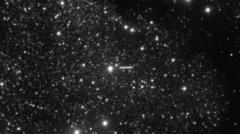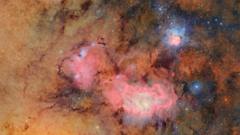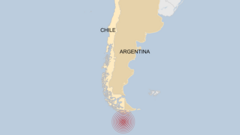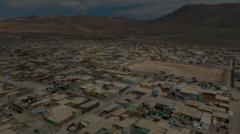3I/ATLAS, an intriguing interstellar object just discovered, could potentially be the oldest known comet ever spotted! Scientists from Oxford University believe it might be over three billion years older than our solar system, making it a stellar highlight! This rare cosmic visitor was first seen on July 1, 2025, thanks to the ATLAS survey telescope based in Chile, when it was a whopping 670 million km away from the Sun.
Notably, this marks only the third time that a celestial object from outside our solar system has been identified. Matthew Hopkins, an Oxford astronomer and first to spot it, expressed excitement, noting it might be over seven billion years old! The team's findings were shared during a recent UK Royal Astronomical Society meeting.
Astronomer Chris Lintott emphasizes that 3I/ATLAS could yield unprecedented insight into the galaxy's 'thick disk'—home to ancient stars and lots of water ice. As 3I/ATLAS closes in on our Sun later this year, it will heat up, creating a breathtaking tail of vapour and dust.
You might get the chance to see this interstellar wonder yourself as it will be visible from Earth using amateur telescopes! Before this, only two similar interstellar visitors were detected: 1I/'Oumuamua in 2017 and 2I/Borisov in 2019. Plus, astronomers are gearing up for a new powerful telescope in Chile—the Vera C Rubin—which might discover even more interstellar treasures in the near future! Get ready for some cosmic excitement!
Notably, this marks only the third time that a celestial object from outside our solar system has been identified. Matthew Hopkins, an Oxford astronomer and first to spot it, expressed excitement, noting it might be over seven billion years old! The team's findings were shared during a recent UK Royal Astronomical Society meeting.
Astronomer Chris Lintott emphasizes that 3I/ATLAS could yield unprecedented insight into the galaxy's 'thick disk'—home to ancient stars and lots of water ice. As 3I/ATLAS closes in on our Sun later this year, it will heat up, creating a breathtaking tail of vapour and dust.
You might get the chance to see this interstellar wonder yourself as it will be visible from Earth using amateur telescopes! Before this, only two similar interstellar visitors were detected: 1I/'Oumuamua in 2017 and 2I/Borisov in 2019. Plus, astronomers are gearing up for a new powerful telescope in Chile—the Vera C Rubin—which might discover even more interstellar treasures in the near future! Get ready for some cosmic excitement!


















